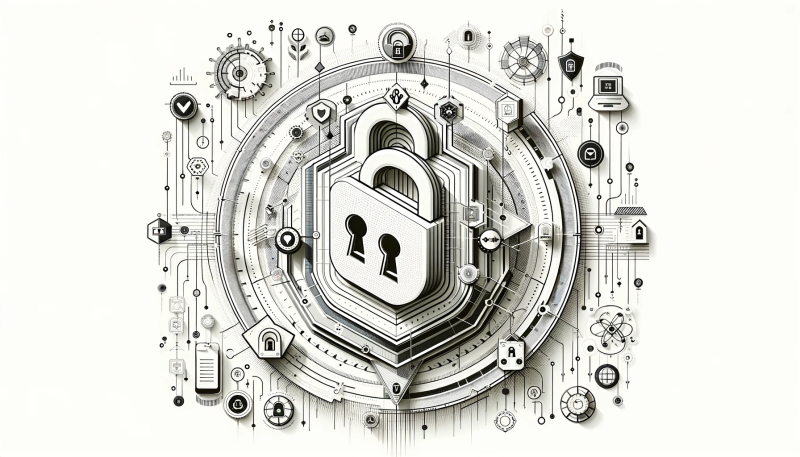A New Marketing Saga
Decoding Zero Trust: The Comprehensive Guide to Improving Your Cybersecurity
In today's fast-paced digital world, cybersecurity has become a critical concern for businesses and organizations of all sizes. As cyber threats become more advanced and sophisticated, traditional security approaches are no longer enough to protect agains

Introduction
In today's fast-paced digital world, cybersecurity has become a critical concern for businesses and organizations of all sizes. As cyber threats become more advanced and sophisticated, traditional security approaches are no longer enough to protect against these threats. This is where the concept of Zero Trust comes in. Zero Trust is a security paradigm that aims to eliminate implicit trust and improve the protection of resources by taking a risk-based approach to authentication and access. However, in recent years, many companies have started to flag their products as "Zero Trust" without fully understanding the concept. As a result, the Zero Trust label has become more of a marketing tool than a true indicator of a company's commitment to security. This is a concerning trend, as it can lead to confusion and false security for organizations.
The purpose of this article is to provide a comprehensive understanding of the Zero Trust paradigm. We will delve into the history of traditional security approaches and how they are no longer adequate in today's threat landscape. We will explore the key principles of Zero Trust and how they differ from traditional security approaches. Additionally, we will cover the various measures that organizations can take to improve their security, such as risk-based authentication, end-to-end encryption, monitoring of accounts and sessions, protection against lateral movement and privilege escalation, conditional access, segmentation, gateways, and identification of compromises.
By the end of this article, you will have a better understanding of the Zero Trust paradigm and its key principles. You will also be equipped with the knowledge and tools to assess your organization's security posture and take the necessary steps to improve it. Zero Trust is not just a label, but a comprehensive approach to security that requires a long-term commitment and ongoing effort to implement effectively. With this understanding, you can ensure that your organization's cybersecurity is ready to face the challenges of the digital age.
Chapter 1: The History of Traditional Security Approaches
The world of cybersecurity has come a long way since the early days of computing. In the past, organizations primarily relied on a single perimeter setup with a Virtual Private Network (VPN) to secure their networks and resources. The basic premise of this approach was that the network was secure and that any access from outside the network was inherently untrusted.
This approach worked well in the early days of computing when the threat landscape was relatively simple and the focus was on securing the perimeter. However, as the internet grew and the threat landscape evolved, this approach became less effective. The rise of mobile computing, cloud computing, and the Internet of Things (IoT) has introduced new attack vectors and made it much easier for attackers to bypass the perimeter.
One of the biggest problems with the traditional security approach is that it assumes that the network is secure and that any access from outside the network is untrusted. This assumption is no longer valid in today's threat landscape, as attackers can easily penetrate the perimeter and gain access to sensitive information. Additionally, the traditional security approach does not take into account the fact that threats can come from within the network as well, such as from compromised devices or malicious insiders.
Another issue with the traditional security approach is that it does not provide adequate protection for sensitive data and resources. With the rise of cloud computing and the growing use of mobile devices, sensitive data is now being stored and accessed from a variety of different locations and devices. This makes it much more difficult to protect sensitive data and resources, as they are now dispersed across a wide range of endpoints.
Despite these limitations, many organizations still rely on the traditional security approach and VPNs to secure their networks. However, this approach is no longer adequate in today's rapidly changing threat landscape and leaves organizations vulnerable to cyber attacks.
Chapter 2: Zero Trust: A New Approach to Security
In response to the limitations of the traditional security approach, a new security paradigm has emerged: Zero Trust. Zero Trust is a security approach that assumes that all access to resources, whether from within the network or outside of it, is untrusted. The key principle of Zero Trust is to eliminate implicit trust and improve the protection of resources by taking a risk-based approach to authentication and access.
The Zero Trust approach is based on the following principles:
Verify the identity of all users, devices, and services before granting access to resources. Limit the access to resources based on the user's role and the level of risk associated with the request.
- Monitor all access to resources and detect and respond to any anomalies or suspicious activity.
- Continuously assess the risk associated with access to resources and adjust the level of security as needed.
By following these principles, the Zero Trust approach provides a more comprehensive and flexible approach to security that is better suited to today's threat landscape. The Zero Trust approach provides a more dynamic and risk-based approach to security, which allows organizations to better protect their resources and respond more effectively to threats.
